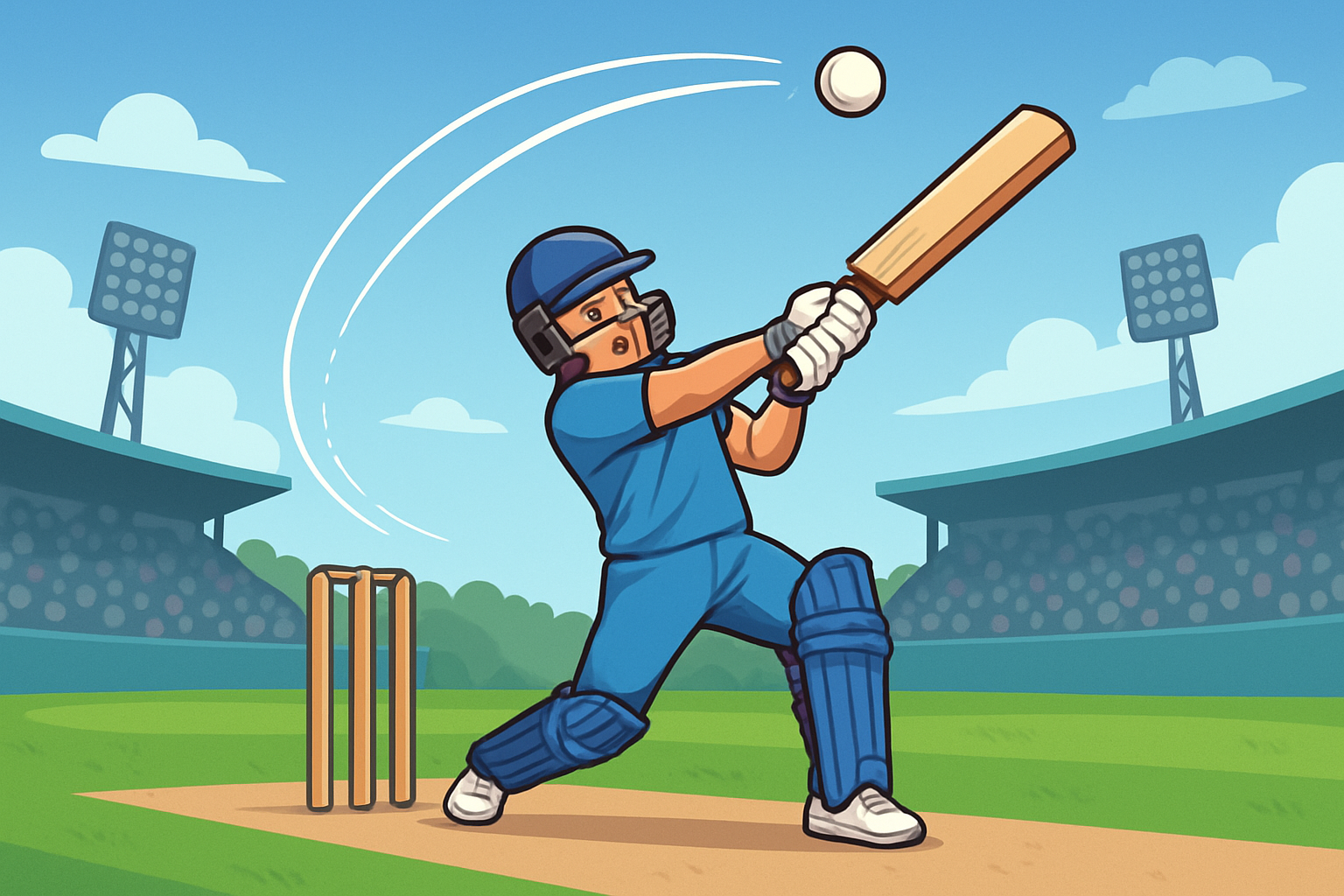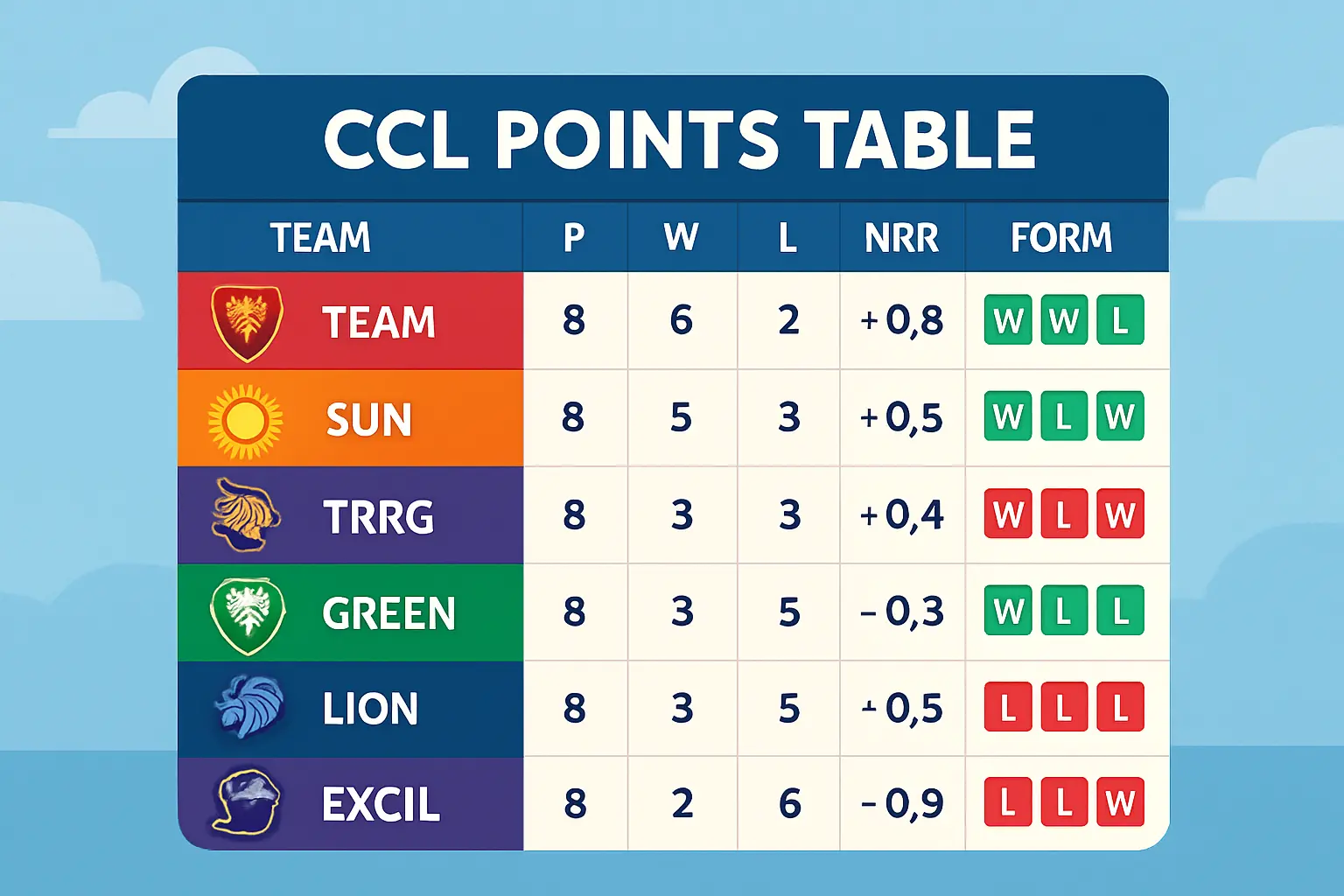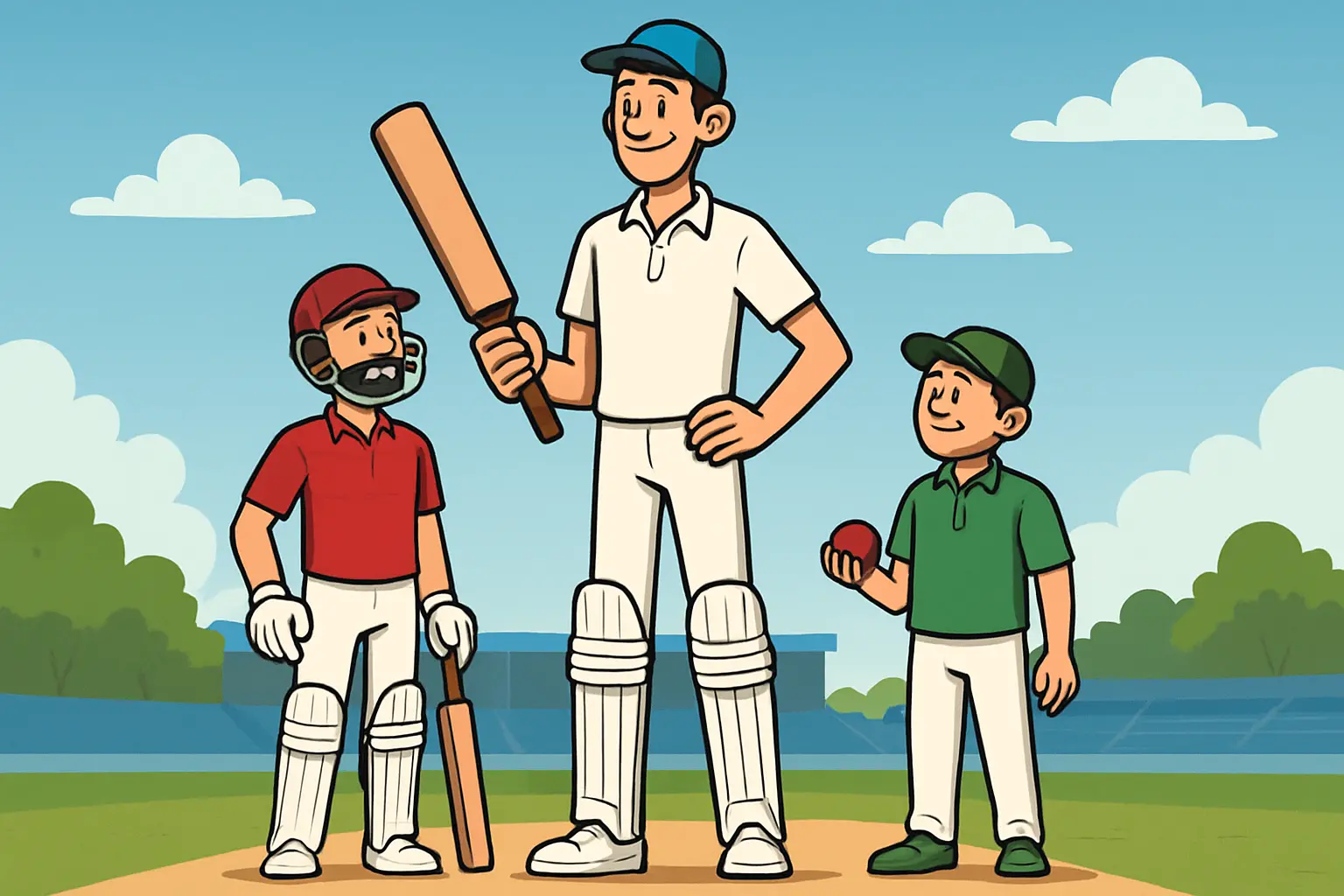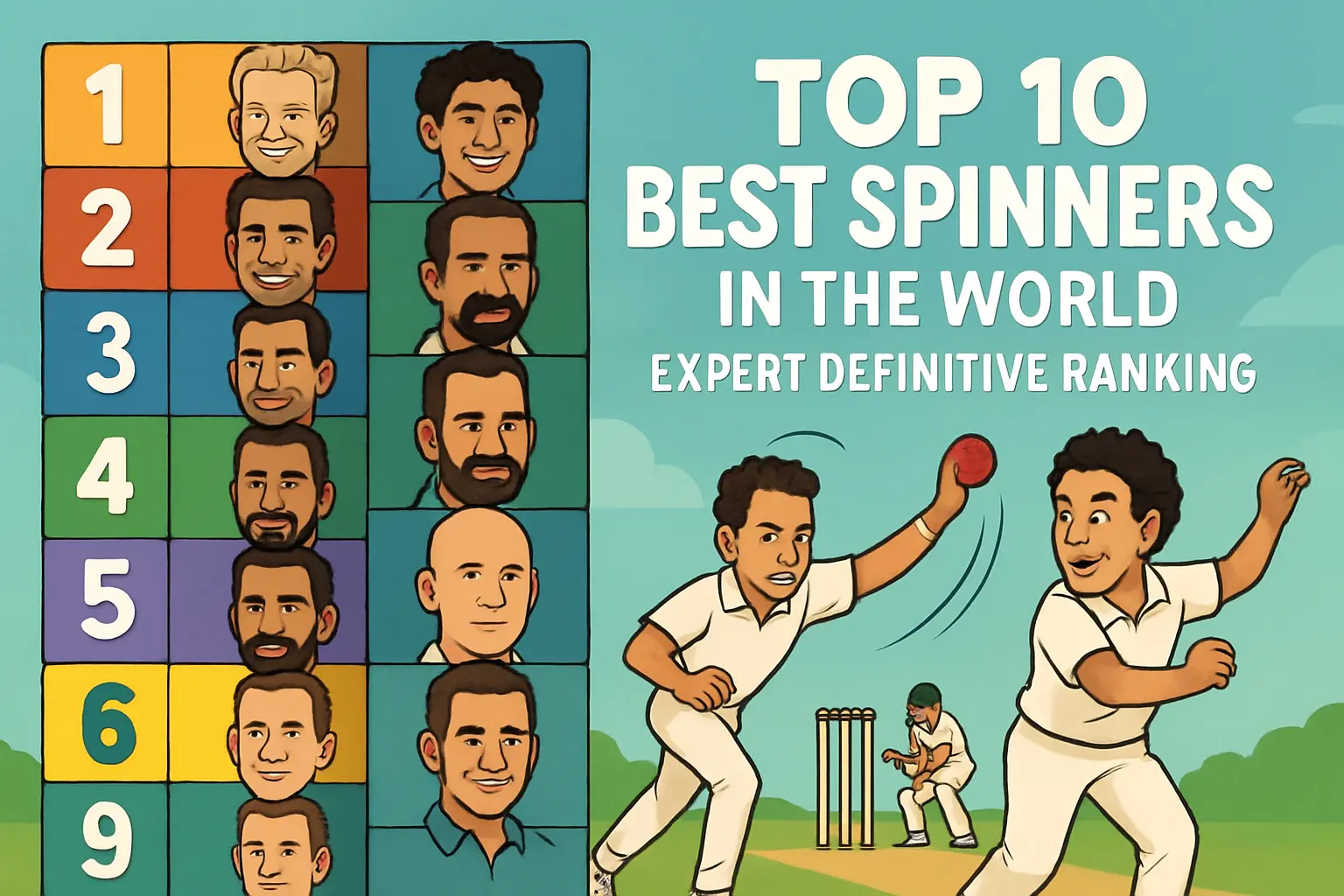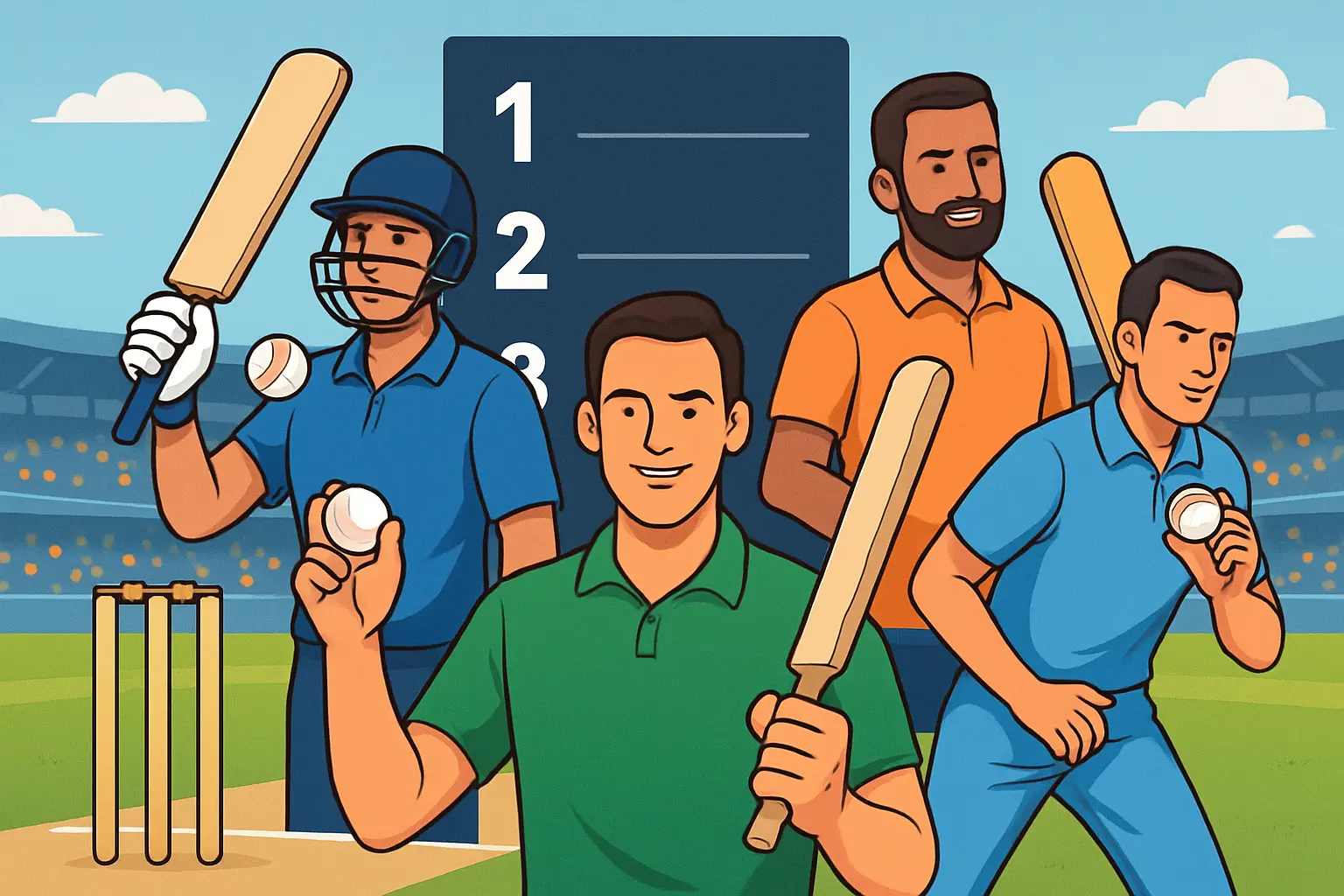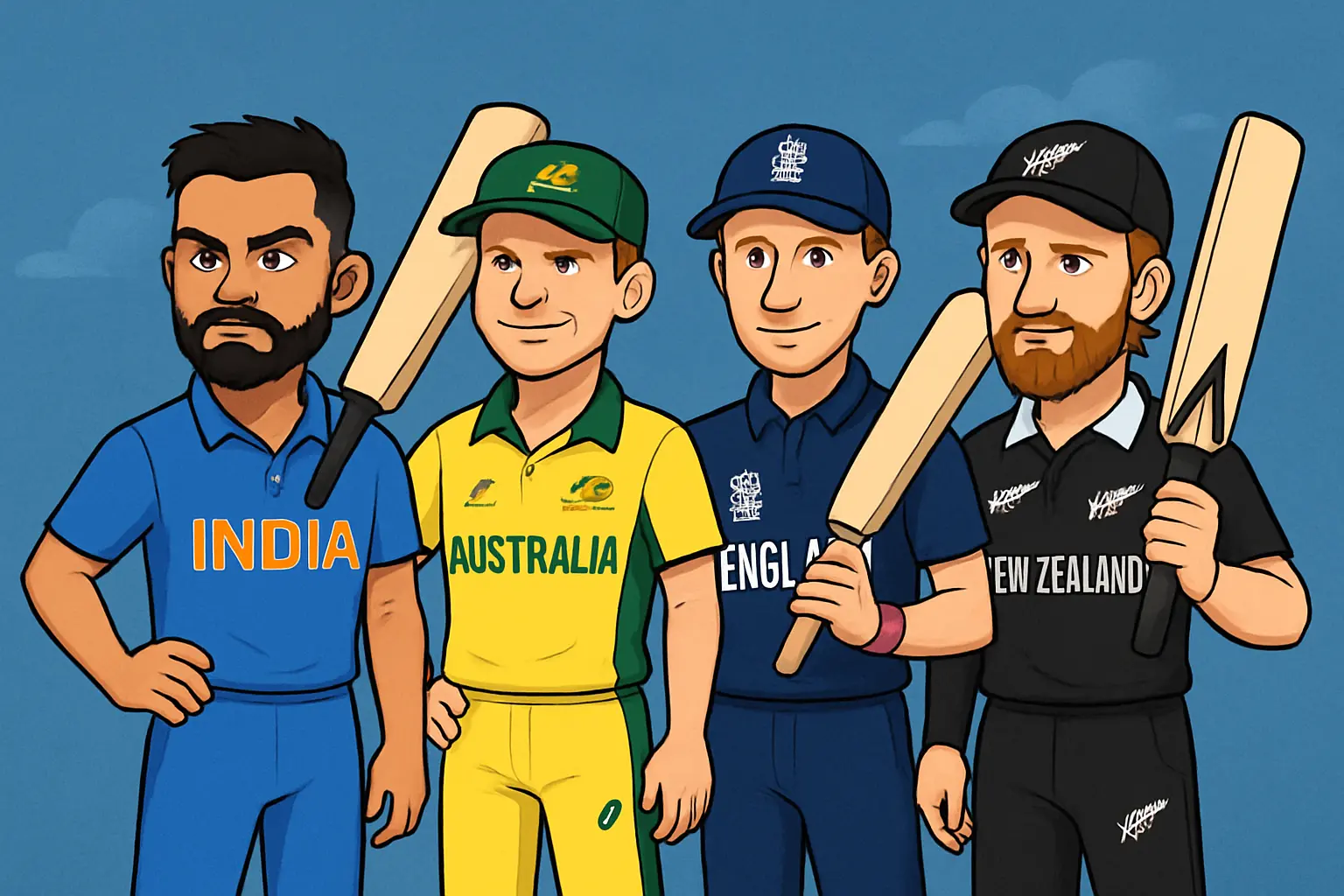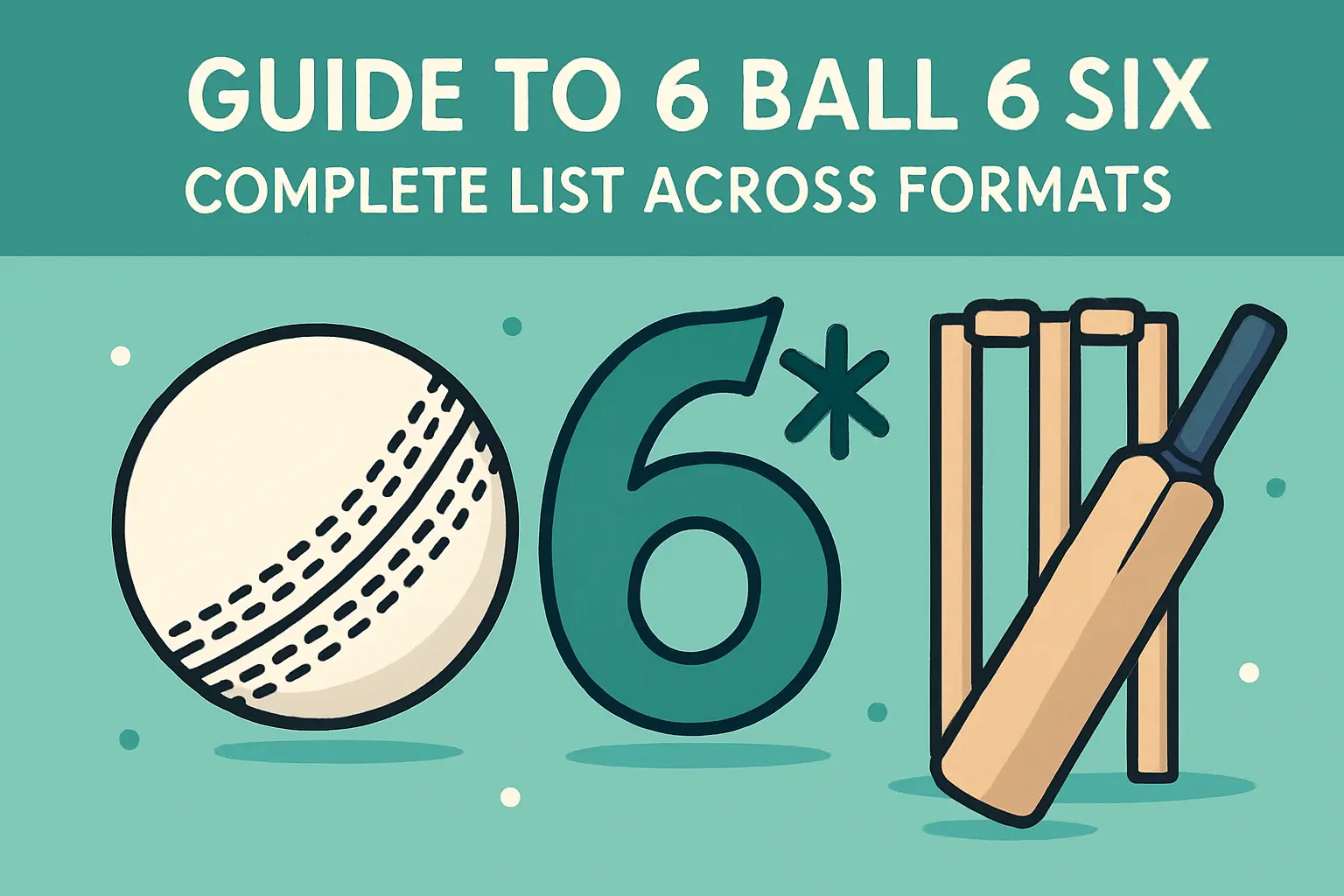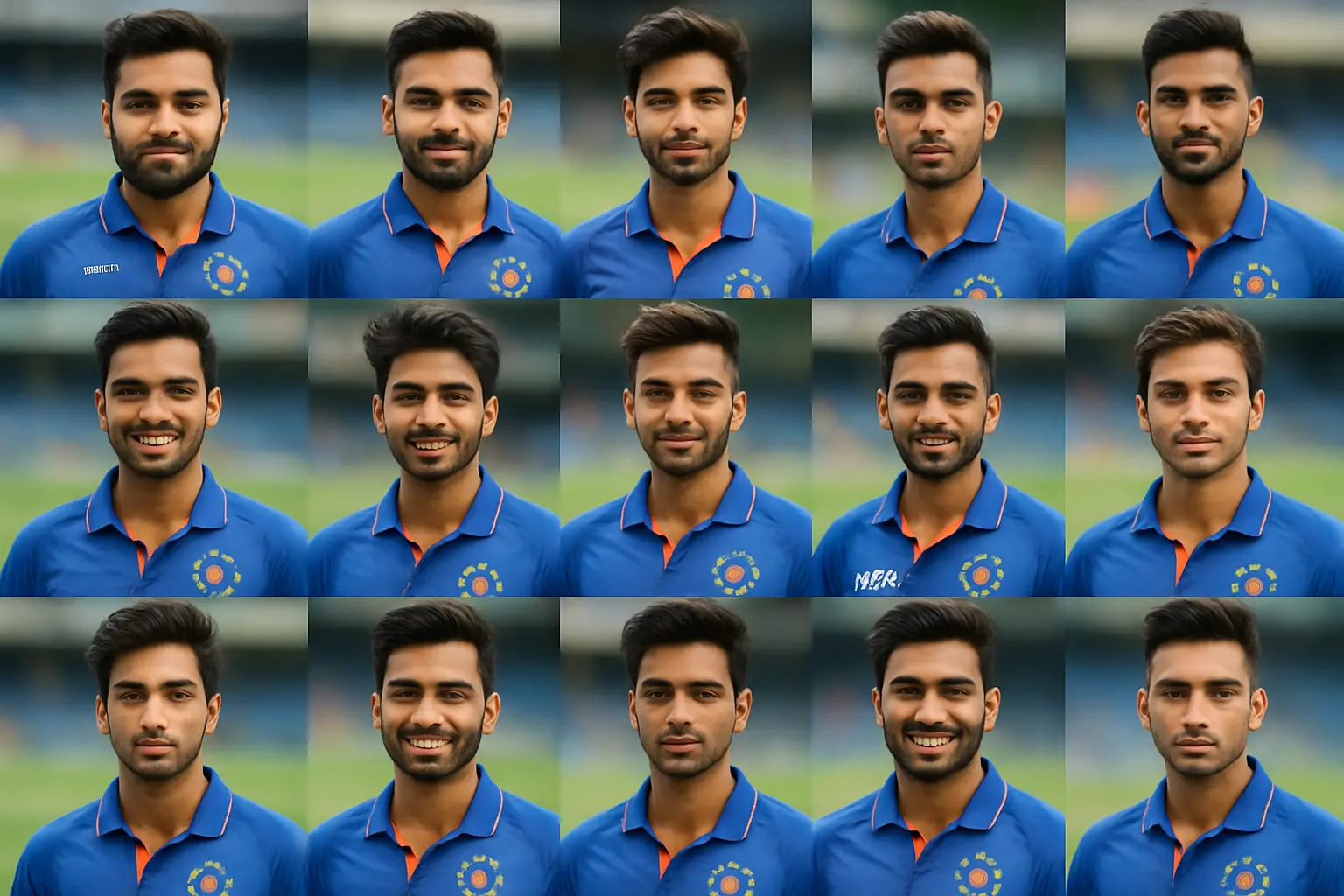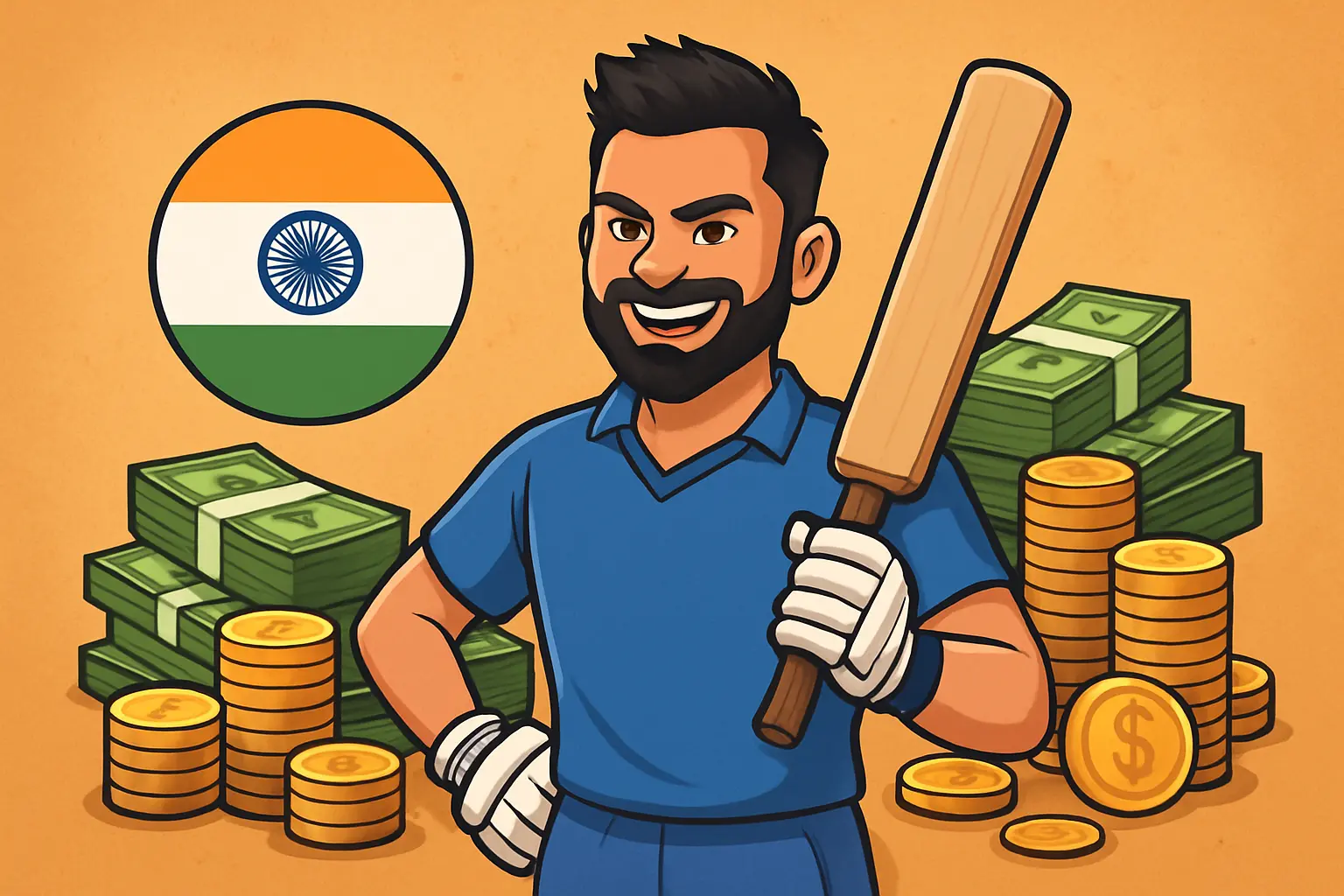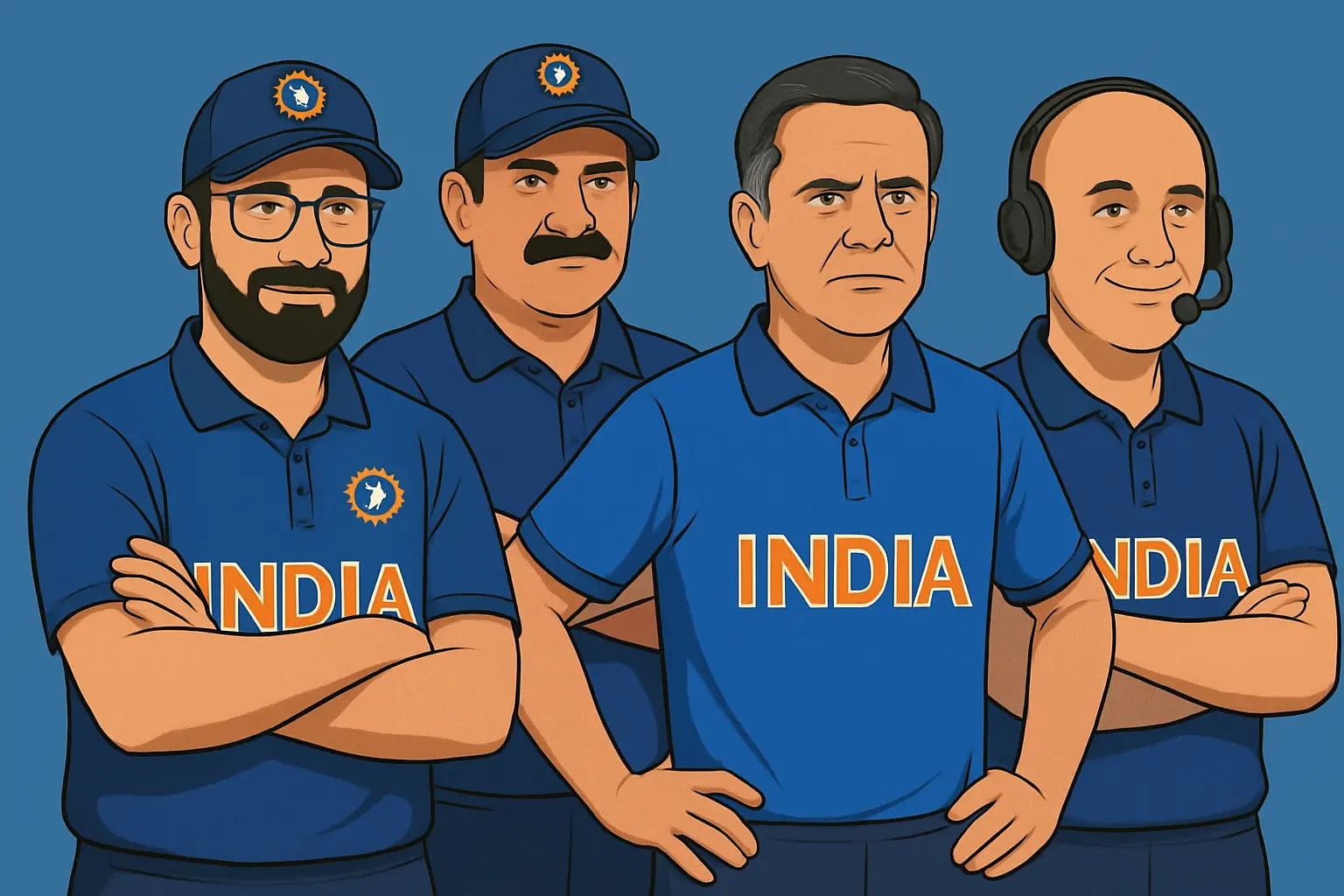Cricket’s farthest sixes live in the space where physics meets folklore. Every generation claims a monster hit that felt like it left the stadium orbit, and sometimes the ball really did. The phrase longest six in cricket history pulls fans, analysts, and players into the same rabbit hole: what was measured, what was estimated, what the altitude did to the ball, and what the cameras actually captured.
Here is the clear, expert bottom line. In the modern measured era, verified distances consistently top out in the 120s in meters, with a tiny handful pushing beyond that band depending on measurement model and conditions. Martin Guptill’s 127 m hit in international cricket and Liam Livingstone’s 122 m cannon at Headingley in the domestic hundred-ball competition stand as the most widely cited verified peaks of the last decade-plus of broadcast science. Franchise T20s have produced enormous hits too: Chris Lynn’s 121 m at the Gabba in the BBL and Albie Morkel’s 125 m in the IPL are staples of any serious list. Historical claims like Albert Trott clearing the Lord’s pavilion and Shahid Afridi’s 158 m at the Wanderers belong to the myth-and-memory chapter: magnificent, plausible in their own way, but not measured to modern standards.
This page is built for fans who want the truth, and for writers and analysts who need a defensible reference. It separates verified, modern-era records from contested or historical claims, breaks the story down by international formats and major leagues, explains how distance is actually measured, and gives you stadium context that most listicles skip.
How to read this record
- Verified means the distance was generated by a modern broadcast system such as Hawk-Eye, Virtual Eye, or an official league feed using ball-tracking or flight-model simulations to apex.
- Contested or historical means the number comes from eyewitness accounts, print-era reports, scoreboard graphics without tracking corroboration, or reconstructions made long after the event.
- Distances are given in meters first, then feet. Venue, format, and a note on source type are included where possible.
- No single central database exists for cricket six distances. The most reliable figures come from international broadcasts, official league partners, and teams or governing bodies that publish tracking data.
The verified longest sixes in modern cricket
The table below captures the best-substantiated sixes in the modern, televised era. These are the benchmark numbers analysts cite when discussing the longest six ever in cricket, longest six in world cricket, and longest six in modern cricket. They form the backbone of any answer to who hit the longest six, while acknowledging that the science and the context matter.
Verified top distances (modern broadcast or ball-tracking measured)
| Player | Distance (m) | Distance (ft) | Format | Venue | Source Type | |
|---|---|---|---|---|---|---|
| 1) | Martin Guptill | 127 m | 417 ft | International T20I | Wellington | Broadcast ball-tracking estimate published during play |
| 2) | Albie Morkel | 125 m | 410 ft | IPL | Chennai | Official IPL broadcast distance |
| 3) | Liam Livingstone | 122 m | 400 ft | The Hundred | Headingley | Hawk-Eye/Smart Replay, broadcast verified |
| 4) | Chris Lynn | 121 m | 397 ft | BBL | Brisbane (The Gabba) | Fox Cricket ball-tracking |
| 5) | Corey Anderson | 122 m | 400 ft | International white-ball | Napier | Broadcast estimate with ball-flight modeling |
| 6) | Yuvraj Singh | 119 m | 390 ft | International T20 | Durban | Broadcast estimate |
| 7) | MS Dhoni | 118 m | 387 ft | International white-ball | Bengaluru | Broadcast estimate |
| 8) | Liam Livingstone | 117 m | 384 ft | IPL | Mumbai (Wankhede) | IPL broadcast measurement |
| 9) | Andre Russell | 117 m | 384 ft | IPL | Kolkata (Eden Gardens) | Broadcast estimate |
| 10) | Ben Cutting | 117 m | 384 ft | BBL | Brisbane (The Gabba) | Fox Cricket tracking |
| 11) | Martin Guptill | 116 m | 381 ft | ODI | Auckland | Broadcast estimate |
| 12) | Rohit Sharma | 115 m | 377 ft | International T20 | Indore | Broadcast estimate |
Notes
- Guptill’s 127 m and Livingstone’s 122 m are repeatedly cited across reputable outlets with consistent venue, arc, and tracking context. These are the modern touchstones for longest six in international cricket and the farthest six in cricket as measured by recognized broadcast systems.
- IPL distances beyond the top few vary by season due to changes in how broadcasters generated or displayed the numbers, but the Albie Morkel 125 m remains the league’s own headline.
- Lynn’s 121 m at the Gabba is one of the most trusted league hits because Fox Cricket tends to align their publishing with ball-tracking integrity, and the Gabba camera geometry is clean for triangulation.
Contested or historical claims
These are part of cricketing lore. They deserve respect and context but should not be mixed with strictly measured modern records. Treat them as remarkable moments with uncertain numeric values rather than settled data. The standout claims are below, with caveats that matter to analysts and historians.
Contested and historical longest sixes
- Albert Trott — estimated 160 m+ — Lord’s — Pre-modern era, ball reportedly cleared the Lord’s pavilion. No flight tracking existed; reconstructions vary widely based on trajectory assumptions and landing point reconstructions.
- Shahid Afridi — 158 m claim — Wanderers, ODI — Frequently quoted; broadcast graphic provenance is unclear; altitude at Johannesburg can inflate carry; independent tracking not available. A more conservative physics-based range for this strike sits well below the claim, though it was a colossal hit.
- Brett Lee — 130–140 m band claims — Brisbane, Test cricket — The famous straight hit at the Gabba is remembered as monstrous; published numbers vary, usually without a tracking audit. The bowler’s reputation amplifies the story, but a single verified figure does not exist.
- Mark Waugh — 120 m+ — Perth (WACA) — Anecdotally massive at a ground that rewarded straight hitting; lacks standardized measurement.
- Chris Gayle — 120 m+ claims at multiple venues — Franchise T20s and internationals — Many graphics exist across leagues; exact calibration differs per tournament and season.
- MS Dhoni — 125–130 m claims — Multiple venues — Viral compilations often recycle mixed measurement standards and hypothetical arcs; verified peak sits in the 110–120 m window.
- Yuvraj Singh — 120 m+ claims beyond the verified 119 m band — Similarly subject to broadcast variance and retrospective estimates.
- Shahid Afridi — Perth, ODI — Another giant straight hit often listed at 120 m+; methodology and exact source vary.
Why the caveats matter
- Altitude at venues like Johannesburg and Centurion produces thinner air; even small changes in density at impact and at apex affect carry in a way that amplifies raw numbers when not modeled precisely.
- Ball-tracking requires multiple synchronized cameras with calibrated geometry; older broadcasts did not have this infrastructure.
- Boundary lengths differ dramatically by ground and even match layout; a hit that lands “out of the stadium” is visually impressive but may not travel as far through the air as a straight hit at a large venue with deeper fences.
Longest six by format
Test cricket
Test grounds privilege straight boundaries and traditional field spreads, yielding fewer big swings per game but some unforgettable strikes from specialists and lower-order hitters. Brett Lee’s Gabba uppercut is the archetypal Test monster, often placed in the 130 m band by enthusiastic retellings, though exact verification is not available. In the modern measured era, Test sixes typically cluster under the white-ball peaks, largely because T20-specific intent, ball hardness management, and match situation in white-ball formats push players into more maximal launch conditions.
Indicative Test highlights
- Brett Lee at the Gabba, straight and high over long-on: contested range in the 130 m neighborhood.
- MS Dhoni at Wankhede and Kolkata, towering straight hits: broadcast estimates sit below his white-ball peaks.
- Ben Stokes at Lord’s and Headingley, long square and straight; rarely beyond the 110 m bracket by measured standards.
ODI cricket
ODIs used to host more of the folklore giants due to fielding restrictions and harder white balls. Modern data shows ODI top-end distances sitting alongside T20I peaks when hitters commit to early launch windows.
Indicative ODI highlights
- Martin Guptill’s biggest verified sixes include 116 m at Auckland, with multiple 100 m+ entries.
- Shahid Afridi produced several ODI bombs measured in the 110–120 m zone; the famous 158 m graphic from Johannesburg belongs to the contested bucket.
T20I cricket
T20Is are where intent, bat technology, and ball condition converge into clean power-hitting. The longest six in T20I cricket, based on trustworthy broadcast tracking, is commonly cited as Martin Guptill’s 127 m in Wellington. Liam Livingstone’s international sixes often breach the 110 m mark, with one verified around 122 m in domestic competition and multiple near that zone for England.
Franchise leagues
IPL
The longest six in IPL history is credited to Albie Morkel at 125 m in Chennai, a number the league has stood by through multiple retrospective lists. In recent seasons, Liam Livingstone’s 117 m at Wankhede reinforced that IPL pitches, balls, and the compressed launch windows of death overs still serve the art of the deep strike.
Other IPL names that crop up around the 110–120 m bracket
- Chris Gayle at Bengaluru and Delhi, straight and over midwicket.
- MS Dhoni at Bengaluru, Mumbai, Chennai, tall and majestic over long-on.
- Andre Russell at Kolkata, brutal pick-up over midwicket and long-on.
- Yuvraj Singh in the early IPL years, high-arc pulls into the stands.
PSL
PSL venues like Karachi and Lahore provide a mix of sea-level resistance and dry, true surfaces that carry the ball nicely when hit with backspin. The league’s longest published distances typically live around 110 m, with a handful nudging toward the mid-110s. Shahid Afridi, Fakhar Zaman, and Asif Ali have produced the most eye-catching carries, though record-keeping standards vary by season.
BBL
The BBL has one of the most reliable broadcast ecosystems for six-distance tracking. Chris Lynn’s 121 m at the Gabba remains a fan-favorite benchmark, supported by Fox Cricket’s ball-tracking workflows. Ben Cutting has multiple entries at or above 115 m, and club tracks like the Adelaide Oval and Perth Stadium serve long square carries when wind aligns with the short side.
CPL
Caribbean venues with pockets of wind and humidity produce deceptive ball flight. Andre Russell and Kieron Pollard dominate CPL memory for big sixes, and while multiple hits are published in the 110–120 m range, the league’s tracking consistency has improved only in recent editions. Russell’s cleanest levers, typically from a stable base, appear often in this record band.
The Hundred
The Hundred’s broadcast setup, including Hawk-Eye, is excellent for measurement confidence. Liam Livingstone’s 122 m at Headingley is a modern showpiece, landing deep beyond the rugby stand and providing one of the most repeatable case studies for apex-to-ground modeling. Other 100 m+ hits in the competition come from the same class of power all-rounders and openers who excel in short-format windows.
Stadium-wise longest sixes and what the grounds do to the ball
Wankhede, Mumbai
- Shorter square boundaries paired with a truer pitch produce quick hands into the stands. Tall straight hits are harder due to the pavilion depth.
- Liam Livingstone’s 117 m at Wankhede is a standout modern measurement for IPL.
- The sea-level air is not as forgiving as high-altitude venues, so 120 m+ requires near-perfect bat-ball contact and optimal launch.
Eden Gardens, Kolkata
- Little wind disruption, slightly heavier air, and a high backdrop that accentuates the optical drama.
- Andre Russell has multiple bombs near 115–117 m on broadcast estimates.
- Midwicket pockets feel inviting, but the deep straight boundary demands a clean strike.
M. Chinnaswamy Stadium, Bengaluru
- Altitude near the plateau, a fast outfield, and a compact outfield create a paradise for six-hitting.
- Chris Gayle’s best IPL sixes here are often cited in the 110–115 m range, with some broadcast numbers stretching higher.
- The ball carries square better than straight when the wind is still, leading to volume rather than isolated mega distances.
Wanderers, Johannesburg
- Altitude makes this ground the holy grail for pure carry.
- The Afridi 158 m claim originates here; even if that number is disputed, modern physics agrees that Wanderers offers the most favorable environment for huge, verified carries due to thin air and generous sightlines.
- AB de Villiers, Chris Morris, and multiple Proteas hitters have peppered 110–120 m windows here across formats.
MCG, Melbourne
- Long straight boundaries, a heavier ball feel when night air drops, and a vast bowl shape.
- Yuvraj Singh and Aaron Finch have cleared deep center with shots near the 115–120 m window in popular lore, though verified numbers are rarer and often land just below the true IPL/BBL peaks.
Lord’s, London
- The Albert Trott story defines Lord’s mythology for the longest six ever in cricket stories, though the number is a historical estimate.
- Modern white-ball cricket at Lord’s does not often produce the longest sixes by distance, but the scenery enhances every big hit.
WACA and Perth Stadium, Perth
- Dry, fast, and bouncy wickets contribute to brutal straight hits when batters hold their shape.
- Ben Cutting and other BBL hitters have posted some of the biggest Australian sixes here and at the Gabba.
How six distance is measured and why it matters
Broadcast methods
- Triangulation via multiple high-definition cameras tracks the ball from bat to apex. Systems like Hawk-Eye and Virtual Eye compute trajectory, speed, angle, apex height, and forward carry.
- Some broadcasts integrate radar-derived speed and infer distance using aerodynamic models that account for ball type, seam orientation, and air density.
- The best setups combine tracking to apex with a physics model to project to ground contact, adjusting for any obstacles.
The challenge
- The ball becomes very small in frame quickly; occlusions by stands, rooflines, or floodlights can restrict raw tracking after the apex.
- Not every league uses the same parameters or model assumptions. A six measured to the point it first clears the rope versus the place it hits the concourse will produce different numbers.
- Early graphics in T20 leagues sometimes used rough rangefinders and camera geometry approximations. Modern clips are cleaner, but archives mix eras and methods.
Environmental factors that change the final number
- Altitude: The single biggest multiplier. Higher elevation reduces air density and drag, allowing a similar launch to travel several meters farther.
- Wind: Even modest tailwinds accelerate top-end distances and can add two to five meters or more depending on gust timing.
- Ball age and hardness: A newer, harder white ball maintains speed and spin-induced lift longer; older or softer balls lose carry quickly.
- Boundary size and orientation: Short square boundaries create plentiful sixes, but the farthest sixes tend to be straight or over wide long-on/long-off at big venues.
- Bat speed, launch angle, and contact quality: The cleanness of impact and spin axis determine how long the ball stays airborne. Backspin is a friend; mishit topspin kills lift.
By-format and league breakdowns for search and record-keeping
Longest six in Test cricket
- Flagship entry: Brett Lee’s Gabba strike remains the Test touchstone for a single colossal six, though its exact value is contested.
- Modern measured Test sixes seldom match white-ball peaks because situations rarely demand maximum launch.
- Lower-order hitters occasionally access the deep straight pocket, but true 120 m+ verified Test hits are rare.
Longest six in ODI cricket
- Martin Guptill’s high watermark entries and Shahid Afridi’s perennial bombs represent the ODI ceiling in the 120 m neighborhood, with altitude-influenced venues tilting the record.
- ODI setups and ball hardness early in the innings favor distance, but modern fielding patterns reduce the risk-tolerance for continuous big swings.
Longest six in T20I cricket
- Martin Guptill’s 127 m in Wellington stands as the most cited T20I distance with believable broadcast measurement.
- Liam Livingstone’s international reels routinely push into the 110–120 m zone, validating his status as a modern power reference point.
Longest six in IPL history
- Albie Morkel — 125 m — the league’s gold standard. Distance published by IPL’s broadcast partner, repeatedly referenced in league summaries.
- Chris Gayle, MS Dhoni, Andre Russell, and Liam Livingstone all inhabit the 110–120 m band in published IPL numbers.
Longest six in PSL history
- Shahid Afridi and Asif Ali are among PSL’s biggest hitters by distance. Several entries in the 110–115 m range are published by league broadcasts, varying by season and venue.
- Lahore’s higher-carry nights occasionally generate eye-catching graphic numbers, though the league’s longest is still several meters shy of the global peaks.
Longest six in BBL history
Chris Lynn’s 121 m at the Gabba remains a fan-favorite benchmark, supported by Fox Cricket’s ball-tracking workflows. Ben Cutting has multiple entries at or above 115 m, and club tracks like the Adelaide Oval and Perth Stadium serve long square carries when wind aligns with the short side.
Longest six in CPL history
Caribbean venues with pockets of wind and humidity produce deceptive ball flight. Andre Russell and Kieron Pollard dominate CPL memory for big sixes, and while multiple hits are published in the 110–120 m range, the league’s tracking consistency has improved only in recent editions. Russell’s cleanest levers, typically from a stable base, appear often in this record band.
Longest six in The Hundred
The Hundred’s broadcast setup, including Hawk-Eye, is excellent for measurement confidence. Liam Livingstone’s 122 m at Headingley is a modern showpiece, landing deep beyond the rugby stand and providing one of the most repeatable case studies for apex-to-ground modeling. Other 100 m+ hits in the competition come from the same class of power all-rounders and openers who excel in short-format windows.
Stadium-wise longest sixes and what the grounds do to the ball
Wankhede, Mumbai
- Shorter square boundaries paired with a truer pitch produce quick hands into the stands. Tall straight hits are harder due to the pavilion depth.
- Liam Livingstone’s 117 m at Wankhede is a standout modern measurement for IPL.
- The sea-level air is not as forgiving as high-altitude venues, so 120 m+ requires near-perfect bat-ball contact and optimal launch.
Eden Gardens, Kolkata
- Little wind disruption, slightly heavier air, and a high backdrop that accentuates the optical drama.
- Andre Russell has multiple bombs near 115–117 m on broadcast estimates.
- Midwicket pockets feel inviting, but the deep straight boundary demands a clean strike.
M. Chinnaswamy Stadium, Bengaluru
- Altitude near the plateau, a fast outfield, and a compact outfield create a paradise for six-hitting.
- Chris Gayle’s best IPL sixes here are often cited in the 110–115 m range, with some broadcast numbers stretching higher.
- The ball carries square better than straight when the wind is still, leading to volume rather than isolated mega distances.
Wanderers, Johannesburg
- Altitude makes this ground the holy grail for pure carry.
- The Afridi 158 m claim originates here; even if that number is disputed, modern physics agrees that Wanderers offers the most favorable environment for huge, verified carries due to thin air and generous sightlines.
- AB de Villiers, Chris Morris, and multiple Proteas hitters have peppered 110–120 m windows here across formats.
MCG, Melbourne
- Long straight boundaries, a heavier ball feel when night air drops, and a vast bowl shape.
- Yuvraj Singh and Aaron Finch have cleared deep center with shots near the 115–120 m window in popular lore, though verified numbers are rarer and often land just below the true IPL/BBL peaks.
Lord’s, London
- The Albert Trott story defines Lord’s mythology for the longest six ever in cricket stories, though the number is a historical estimate.
- Modern white-ball cricket at Lord’s does not often produce the longest sixes by distance, but the scenery enhances every big hit.
WACA and Perth Stadium, Perth
- Dry, fast, and bouncy wickets contribute to brutal straight hits when batters hold their shape.
- Ben Cutting and other BBL hitters have posted some of the biggest Australian sixes here and at the Gabba.
How six distance is measured and why it matters
Broadcast methods
- Triangulation via multiple high-definition cameras tracks the ball from bat to apex. Systems like Hawk-Eye and Virtual Eye compute trajectory, speed, angle, apex height, and forward carry.
- Some broadcasts integrate radar-derived speed and infer distance using aerodynamic models that account for ball type, seam orientation, and air density.
- The best setups combine tracking to apex with a physics model to project to ground contact, adjusting for any obstacles.
The challenge
- The ball becomes very small in frame quickly; occlusions by stands, rooflines, or floodlights can restrict raw tracking after the apex.
- Not every league uses the same parameters or model assumptions. A six measured to the point it first clears the rope versus the place it hits the concourse will produce different numbers.
- Early graphics in T20 leagues sometimes used rough rangefinders and camera geometry approximations. Modern clips are cleaner, but archives mix eras and methods.
Environmental factors that change the final number
- Altitude: The single biggest multiplier. Higher elevation reduces air density and drag, allowing a similar launch to travel several meters farther.
- Wind: Even modest tailwinds accelerate top-end distances and can add two to five meters or more depending on gust timing.
- Ball age and hardness: A newer, harder white ball maintains speed and spin-induced lift longer; older or softer balls lose carry quickly.
- Boundary size and orientation: Short square boundaries create plentiful sixes, but the farthest sixes tend to be straight or over wide long-on/long-off at big venues.
- Bat speed, launch angle, and contact quality: The cleanness of impact and spin axis determine how long the ball stays airborne. Backspin is a friend; mishit topspin kills lift.
By-format and league breakdowns for search and record-keeping
Longest six in Test cricket
- Flagship entry: Brett Lee’s Gabba strike remains the Test touchstone for a single colossal six, though its exact value is contested.
- Modern measured Test sixes seldom match white-ball peaks because situations rarely demand maximum launch.
- Lower-order hitters occasionally access the deep straight pocket, but true 120 m+ verified Test hits are rare.
Longest six in ODI cricket
- Martin Guptill’s high watermark entries and Shahid Afridi’s perennial bombs represent the ODI ceiling in the 120 m neighborhood, with altitude-influenced venues tilting the record.
- ODI setups and ball hardness early in the innings favor distance, but modern fielding patterns reduce the risk-tolerance for continuous big swings.
Longest six in T20I cricket
- Martin Guptill’s 127 m in Wellington stands as the most cited T20I distance with believable broadcast measurement.
- Liam Livingstone’s international reels routinely push into the 110–120 m zone, validating his status as a modern power reference point.
Longest six in IPL history
- Albie Morkel — 125 m — the league’s gold standard. Distance published by IPL’s broadcast partner, repeatedly referenced in league summaries.
- Chris Gayle, MS Dhoni, Andre Russell, and Liam Livingstone all inhabit the 110–120 m band in published IPL numbers.
Longest six in PSL history
- Shahid Afridi and Asif Ali are among PSL’s biggest hitters by distance. Several entries in the 110–115 m range are published by league broadcasts, varying by season and venue.
- Lahore’s higher-carry nights occasionally generate eye-catching graphic numbers, though the league’s longest is still several meters shy of the global peaks.
Longest six in BBL history
- Chris Lynn — 121 m at the Gabba — remains the BBL’s poster swing. Ben Cutting and Aaron Finch also feature regularly in the league’s 110 m+ set.
Longest six in CPL history
- Andre Russell’s best carries sit near the top of CPL’s lists, with multiple seasons producing 110–115 m verified or broadcast-reported numbers.
- Wind patterns at grounds like Sabina Park can create deceptive carries; longer hangs with wind assistance look spectacular and sometimes read larger than they model.
Longest six in The Hundred
- Liam Livingstone — 122 m at Headingley — tracked via Hawk-Eye level systems, a genuine modern benchmark that matches the best in world cricket.
Player-focused capsules for the biggest names
Shahid Afridi longest six
- The 158 m claim at the Wanderers is part of cricket folklore. Analysts and physicists who have reconstructed the moment from available angles typically reduce that number significantly.
- Afridi has multiple sixes in the 110–120 m range across formats and leagues, many verified by broadcast systems. His club of cleanly-hit straight strikes at altitude remains essential viewing for students of power hitting.
MS Dhoni longest six distance
- Verified peak distances sit near 118 m, with numerous 110 m+ entries for both India and Chennai in the IPL. Dhoni’s technique — high backlift, late acceleration, and hold at contact — is a masterclass in creating a tall, straight arc.
- Key insight: Dhoni’s signature is repeatable launch rather than outlier peaks. His consistency under pressure is unmatched.
Chris Gayle longest six
- Gayle’s best IPL and international entries typically cluster from 110 to 120 m, with some graphics listing above that line depending on broadcaster.
- Gayle’s technique — minimal footwork, long levers, huge bat speed, and clean extension — is the blueprint for flat-trajectory pulls that still travel deep.
Liam Livingstone longest six
- Verified at 122 m in domestic competition with multiple 110 m+ at international level and the IPL.
- Livingstone’s two-gear power game — conventional swing over long-on and violent wrist release over midwicket — produces both height and carry, ideal for measuring-era records.
Yuvraj Singh longest six
- Verified around 119 m with multiple appearances beyond 110 m. Yuvi’s high backlift and sweet spot timing produced towering arcs that delighted television directors long before tracking matured.
Martin Guptill longest six
- The most-cited long six of the modern international game at 127 m. Guptill’s base stability and clean straight swing let him access apex height without losing face angle, a rare combination.
Brett Lee longest six by a bowler
- A cult moment of Test cricket; exact number disputed, merit undisputed. The strike’s technique — a fast bowler clearing his front leg and banging it straight — is now mimicked by tailenders across formats.
Rohit Sharma and Hardik Pandya long sixes
- Rohit: prime example of timing creating distance; multiple 110 m+ entries in limited-overs internationals.
- Hardik: modern white-ball finisher whose bat speed and wrist snap produce flat missiles that still go past 100 m.
Andre Russell longest six
- Repeated entries around 115–117 m in IPL and CPL. Russell’s late hip drive and core strength mean even contact slightly off the middle can carry beyond most players’ best.
Venue and conditions: deeper analysis for serious readers
- Johannesburg and Centurion are altitude-aided. A mid-110 m swing at sea level may read several meters longer there. Long straight hits at these venues can generate the biggest measured numbers when the ball stays in view for tracking.
- Wellington’s bowl design and wind corridors benefit high, straight arcs. Guptill’s record sits here for good reason.
- Indian metros vary. Bengaluru’s height and the ground’s geometry promote volume and velocity; Mumbai’s Wankhede rewards quick hands and leg-side leverage; Kolkata’s scale makes truly deep straight hits feel epic on screen.
- Australian grounds are honest. The Gabba and Perth offer pace and bounce, punishing off-center hits but rewarding clean contact.
- English venues blend heavier air with reliable technology. The Hundred’s data set is robust, making Livingstone’s 122 m especially authoritative.
A running tracker for recent seasons
Without throwing a wall of numbers, here is the profile of recent seasons across top leagues and internationals.
- The majority of top distances recorded sit between 108 and 120 m, depending on venue and match context.
- Each top league season usually produces one or two strikes in the 115–120 m tier, with smaller clusters around 105–112 m.
- Livingstone, Russell, Glenn Maxwell, Tim David, and Heinrich Klaasen often populate the upper registers when active in the same season across overlapping leagues.
Bowlers on the receiving end
The names vary, and the point is rarely the bowler. The biggest sixes are typically struck off high pace or into the arc from length with fielders out. Half-pace cutters that float can travel, but absolute peaks usually come from fast bowling when the batter catches up and matches speed with bat acceleration.
Spinners concede big distances when they overpitch into the hitting arc with no boundary rider straight. Good leg-spinners escape this by dragging length and taking pace off.
Myth-busting and clarity you can cite
- The longest six ever in cricket, if defined as the farthest verified by modern broadcast systems, sits in the 120–130 m band, not at 150 m or beyond.
- The longest six in international cricket is widely attributed to Martin Guptill at 127 m in Wellington under broadcast measurement. The absolute peak of the modern domestic scene is Liam Livingstone’s 122 m at Headingley in The Hundred, with Chris Lynn’s 121 m in the BBL close behind.
- The longest six in IPL history remains Albie Morkel’s 125 m at Chennai by official league reckoning.
- Historical and contested claims deserve respect, but their numbers should be treated as narrative, not data. Albert Trott’s pavilion-clearing hit belongs to legend; the number attached to it changes with each retelling.
Tables for quick reference
Verified modern-era longest sixes (selected, source-measured)
| Player | Distance (m) | Venue | Format | Source |
|---|---|---|---|---|
| Martin Guptill | 127 m | Wellington | T20I | Broadcast ball-tracking |
| Albie Morkel | 125 m | Chennai | IPL | League broadcast record |
| Liam Livingstone | 122 m | Headingley | The Hundred | Hawk-Eye/Smart Replay |
| Chris Lynn | 121 m | Brisbane (The Gabba) | BBL | Fox Cricket tracking |
| Corey Anderson | 122 m | Napier | ODI | Broadcast estimate |
| Yuvraj Singh | 119 m | Durban | T20I | Broadcast estimate |
| MS Dhoni | 118 m | Bengaluru | ODI/T20I | Broadcast estimate |
| Liam Livingstone | 117 m | Mumbai (Wankhede) | IPL | League broadcast |
| Andre Russell | 117 m | Kolkata (Eden Gardens) | IPL | Broadcast estimate |
| Ben Cutting | 117 m | Brisbane (The Gabba) | BBL | Fox Cricket tracking |
Contested or historical claims with caveats
| Player | Distance (m) | Venue | Format | Caveat |
|---|---|---|---|---|
| Albert Trott | estimated 160 m+ | Lord’s | Pre-modern | Pavilion clearance without tracking |
| Shahid Afridi | 158 m claim | Johannesburg | ODI | Graphic origin unclear, altitude boosts carry |
| Brett Lee | 130–140 m claims | Brisbane | Test | Unverified composite estimates |
| Mark Waugh | 120 m+ | Perth | Test/ODI | Anecdotal era |
| Chris Gayle | 120 m+ claims | Multiple venues | IPL/International | Mixed broadcast methods |
| MS Dhoni | 125–130 m claims | Multiple | ODI/T20I/IPL | Compilation artifacts |
Measurement methodology notes for editors and analysts
- Accept only those distances that come from broadcasts known to use multi-camera ball-tracking and disclose their pipeline. Hawk-Eye and Virtual Eye are industry standards; league in-house systems can be reliable when documented.
- Distinguish between apex measurement and total flight including post-structure rebounds. The cleanest datasets calculate to the first ground contact point.
- Contextualize with venue altitude and boundary length. A 112 m hit at sea level at a ground with a 72 m straight fence is a different feat than a 112 m hit at altitude with a 65 m straight fence.
- Keep a running list per league each season. Update after finals. Treat social media compilations with skepticism unless the original broadcaster’s clip and graphic are present.
Tactical insight: how players actually unlock 115 m and beyond
- Base and sequence: Elite hitters like Livingstone and Russell load early, stay tall through the ball, and avoid collapsing the back side. This keeps the launch angle in the sweet zone and maximizes backspin.
- Contact point: The heaviest carries happen when the ball is struck slightly in front of the pad, not under the eyes. This allows full extension without losing face angle.
- Spin vs pace: Pace on can help when the batter matches it and keeps the blade square. Against spin, the strike must be purer, leveraging wrists to add late speed.
- Ball condition: The first overs with a newer white ball are primed for longer carry if fielding restrictions allow a free swing. Later overs rely on set batters generating their own pace.
- Wind mapping: Smart teams now plan for wind corridors. Hitters are briefed where the night’s tailwind is strongest. This adds marginal meters that decide whether a blow lands 108 or 112.
Country- and team-flavored context
- India: High volume of 100 m+ sixes due to IPL exposure, pitches, and hitter development. True outliers at or above 120 m are rarer outside Bengaluru and Mumbai unless the night is particularly dry.
- New Zealand: Wellington and Auckland produce some of the best-looking arcs; Guptill’s presence defines the national six-distance identity.
- Australia: BBL’s tracking reliability makes Australian numbers useful for cross-era comparisons; MCG and Adelaide Oval are harder for record distances than Gabba or Perth.
- England: Conservative air suits classical arc hitters more than muscled flat hits; The Hundred’s tech stack has enhanced confidence in published numbers.
- Pakistan: Lahore and Karachi PSL seasons showcase hitters who wed timing with strength; extreme outliers require optimal conditions or travel abroad.
The living record and how to keep it honest
Cricket fans deserve clarity. The longest six in cricket history should not hinge on a viral graphic or a scoreboard that blinked an outrageous number and disappeared. The best practice is to treat the record as a living document anchored by verified modern data, with a respectful appendix for the giants of lore.
- The verified ceiling, as it stands today, remains clustered around 122–127 m at the very top.
- International cricket’s most defensible long hit is Martin Guptill’s 127 m at Wellington.
- Domestic peaks are headlined by Liam Livingstone’s 122 m at Headingley and Chris Lynn’s 121 m at the Gabba, with Albie Morkel’s IPL 125 m enshrined by the league.
- Legends like Afridi, Gayle, Dhoni, and Yuvraj populate the 110–120 m tier so reliably that their names carry as much weight as any single number.
Key facts to take away
- Longest six in world cricket, verified by modern broadcast systems, lives in the 120–130 m band.
- Longest six in international cricket: Martin Guptill at 127 m under broadcast measurement.
- Longest six in IPL history: Albie Morkel at 125 m according to league records.
- The Hundred’s standout: Liam Livingstone at 122 m at Headingley with Hawk-Eye grade tracking.
- BBL’s standout: Chris Lynn at 121 m at the Gabba with Fox Cricket ball-tracking.
- Contested giants like Shahid Afridi’s 158 m and Albert Trott’s pavilion clearance belong to mythology and should be cited with clear caveats.
Sources and notes
- Figures in the verified table align with widely published numbers from official broadcasts, league communications, and ball-tracking partners used on those telecasts.
- Contested claims are flagged as such due to absent or inconsistent tracking, conflicting archival references, or physics-based reappraisals that materially lower published distances.
- Distances may vary slightly in secondary sources due to rounding, conversion between meters and feet, or broadcaster graphics that use different model assumptions.
Closing perspective from a lifer around the game
Power in cricket is a language of its own. You hear it off the bat before you see it, a clean crack that tells the crowd to rise because the ball is leaving. The difference between a 92 m six and a 122 m six is not simply gym strength. It is launch, seam, wind, wicket pace, timing, and a hitter’s decision to trust their base when everything in the game tells you to snatch. That is why a Martin Guptill swing at Wellington, a Liam Livingstone detonation at Headingley, a Chris Lynn sledgehammer at the Gabba, and an Albie Morkel arc in Chennai read like signatures. They are not only distances. They are moments when cricket’s mechanics met a batter who understood every inch of the ground and asked for more.
For everyone who believes a bat can bend physics, the record will keep breathing. Another hitter will load deep, pick the wind, find the seam of a fresh white ball, and let it go. When it happens, trust the cameras, trust the numbers, and remember the ground. That extra meter at altitude is real, but the sound off the bat is what you will carry home.

